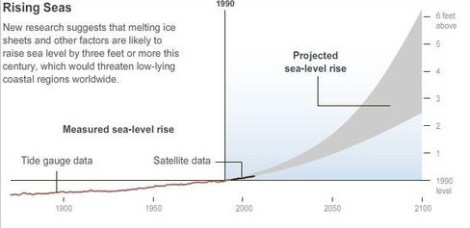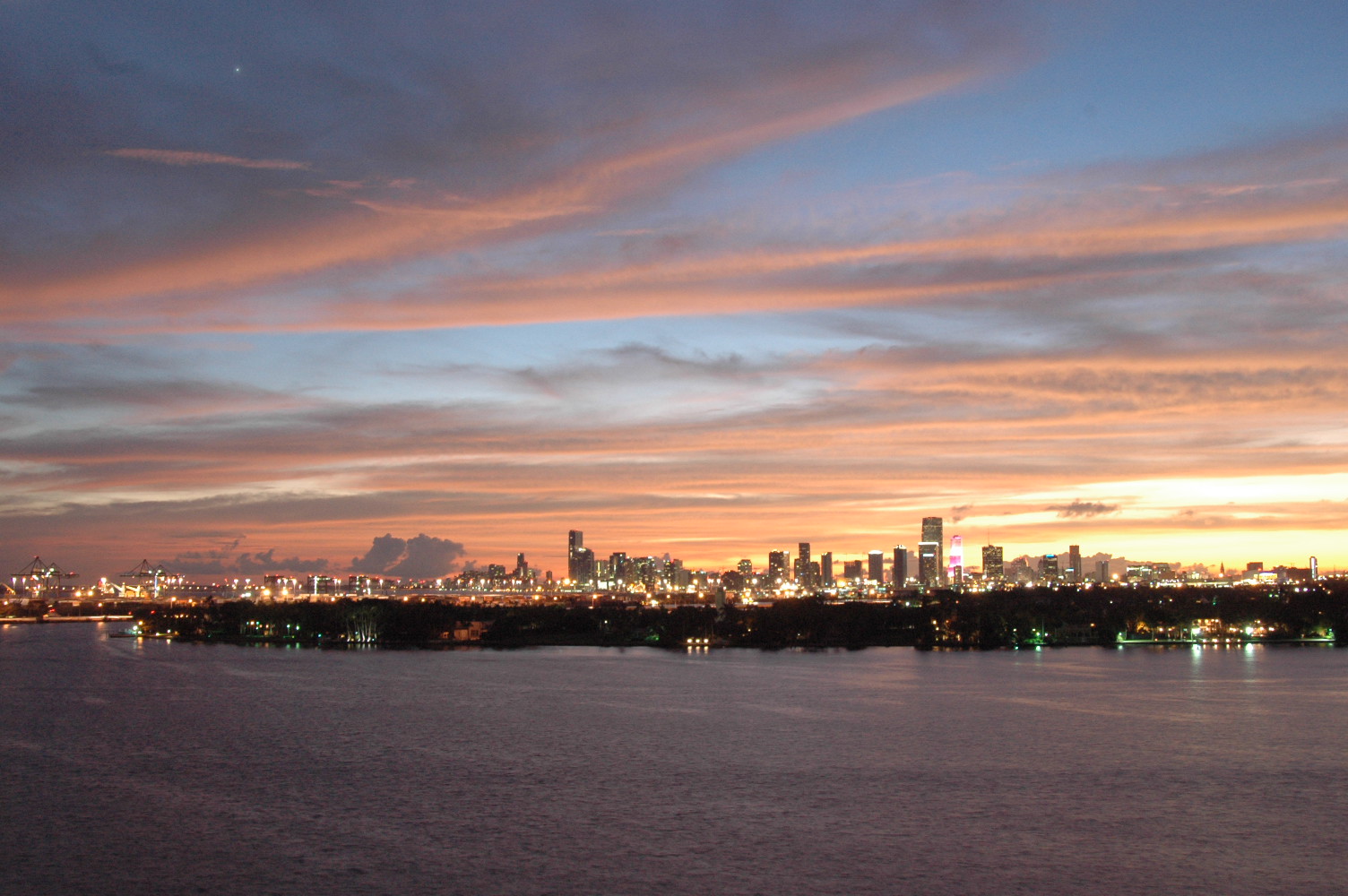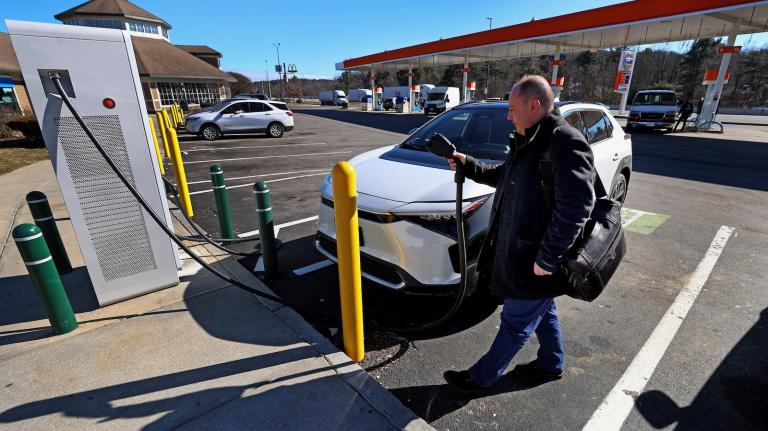
BryanSerenyThe sun is setting on good times in Miami.
Jeff Goodell has a must-read piece in Rolling Stone, “Goodbye, Miami: By century’s end, rising sea levels will turn the nation’s urban fantasyland into an American Atlantis. But long before the city is completely underwater, chaos will begin.”
Goodell has talked to many of the leading experts on Miami, including Harold Wanless, chair of University of Miami’s geological sciences department. The reason climate change dooms Miami is a combination of sea-level rise, the inevitability of ever more severe storms and storm surges — and its fateful, fatal geology and topology, which puts “more than $416 billion in assets at risk to storm-related flooding and sea-level rise”:
South Florida has two big problems. The first is its remarkably flat topography. Half the area that surrounds Miami is less than five feet above sea level. Its highest natural elevation, a limestone ridge that runs from Palm Beach to just south of the city, averages a scant 12 feet. With just three feet of sea-level rise, more than a third of southern Florida will vanish; at six feet, more than half will be gone; if the seas rise 12 feet, South Florida will be little more than an isolated archipelago surrounded by abandoned buildings and crumbling overpasses. And the waters won’t just come in from the east – because the region is so flat, rising seas will come in nearly as fast from the west too, through the Everglades.
Even worse, South Florida sits above a vast and porous limestone plateau. “Imagine Swiss cheese, and you’ll have a pretty good idea what the rock under southern Florida looks like,” says Glenn Landers, a senior engineer at the U.S. Army Corps of Engineers. This means water moves around easily – it seeps into yards at high tide, bubbles up on golf courses, flows through underground caverns, corrodes building foundations from below. “Conventional sea walls and barriers are not effective here,” says Robert Daoust, an ecologist at ARCADIS, a Dutch firm that specializes in engineering solutions to rising seas.
The latest research “suggests that sea level could rise more than six feet by the end of the century,” as Goodell notes, and “Wanless believes that it could continue rising a foot each decade after that.”
Prudence dictates we plan for the plausible worst case. Coastal-studies experts told The New York Times back in 2010, “For coastal management purposes, a [sea-level] rise of 7 feet (2 meters) should be utilized for planning major infrastructure.”

Unfortunately, sea level rise is already 60 percent faster than projected. Goodell reports:
“With six feet of sea-level rise, South Florida is toast,” says Tom Gustafson, a former Florida speaker of the House and a climate-change-policy advocate. Even if we cut carbon pollution overnight, it won’t save us. Ohio State glaciologist Jason Box has said he believes we already have 70 feet of sea-level rise baked into the system.
Certainly without sharp cuts in CO2 starting ASAP, Jason Box is correct (see “Manmade Carbon Pollution Has Already Put Us On Track For 69 Feet Of Sea Level Rise”).
So we need a combination of aggressive mitigation combined with massive spending to develop completely new adaptation solutions for Miami to have any serious chance of surviving this century intact.
Sadly, Florida is one of the last places in the country where such action and planning can be expected:
Those solutions are not likely to be forthcoming from the political realm. The statehouse in Tallahassee is a monument to climate-change denial. “You can’t even say the words ‘climate change’ on the House floor without being run out of the building,” says Gustafson. Florida Sen. Marco Rubio, positioning himself for a run at the presidency in 2016, is another denier, still trotting out the tired old argument that “no matter how many job-killing laws we pass, our government can’t control the weather.” Gov. Rick Scott, a Tea Party Republican, says he’s “not convinced” that global warming is caused by human beings. Since taking office in 2011, Scott has targeted environmental protections of every sort and slashed the budget of the South Florida Water Management District, the agency in charge of managing water supply in the region, as well as restoration of the Everglades. “There is no serious thinking, no serious planning, about any of this going on at the state level,” says Chuck Watson, a disaster-impact analyst with longtime experience in Florida. “The view is, ‘Well, if it gets real bad, the federal government will bail us out.’ It is beyond denial; it is flat-out delusional.”
Goodell’s whole article is worth reading, not just for the sober view of what South Florida faces but also for the beautiful writing:
When it rains in Miami, it’s spooky. Blue sky vanishes and suddenly water is everywhere, pooling in streets, flooding parking lots, turning intersections into submarine crossings. Even for a nonbeliever like me, it feels biblical, as if God were punishing the good citizens of Miami Beach for spending too much time on the dance floor. At Alton Road and 10th Street, we watched a woman in a Toyota stall at a traffic light as water rose up to the doors. A man waded out to help her, water up to his knees. This flooding has gotten worse with each passing year, happening not only after torrential rainstorms but during high tides, too, when rising sea water backs up through the city’s antiquated drainage system. Wanless, 71, who drives an SUV that is littered with research equipment, notebooks and mud, shook his head with pity. “This is what global warming looks like,” he explained. “If you live in South Florida and you’re not building a boat, you’re not facing reality.”



